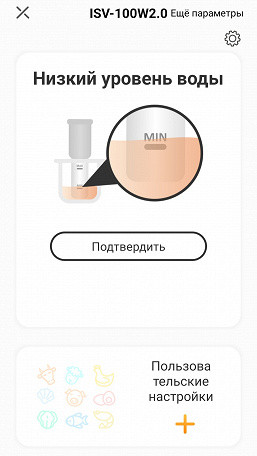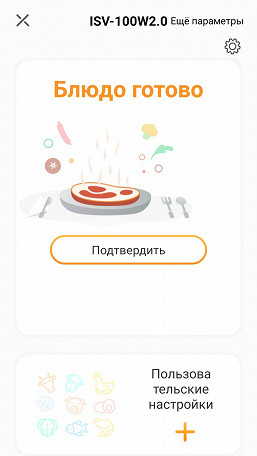Immersion thermostats (or sous vides) are becoming more common in kitchens, ceasing to be exotic for a wide audience. This is encouraging because these devices attract the attention of those who are passionate about cooking and seek to discover new tastes. Today we will look at the operation of the Inkbird ISV-100W immersion thermostat, which can be connected to a Wi-Fi router. This allows users to control the cooking process from anywhere in the world. Judging by the reviews on one of the online stores, this function is popular with many. We can't yet evaluate all its advantages, but it sounds pretty exciting.
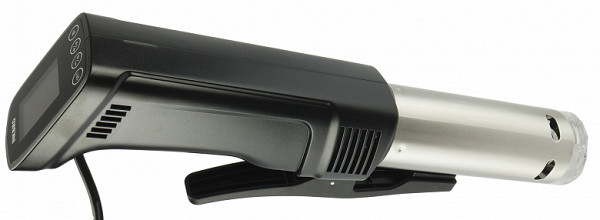
This is our first time encountering Inkbird products, but a quick acquaintance with the manufacturer arouses real interest. The company offers controllers, devices and sensors for the “smart home”, culinary thermometers and sous-vides on the Russian market. This means that their range mainly consists of measuring devices and apparatus where measurement accuracy is of paramount importance. This allows us to hope that the immersion thermostat will have the basic characteristics: the actual temperature will correspond to the set one, and the mechanism will be able to maintain a stable temperature regime throughout the entire volume of the container.
Characteristics
| Manufacturer | Inkbird |
|---|---|
| Model | ISV-100W |
| Type | immersion thermostat (sous vide) |
| Country of Origin | China |
| Guarantee | 12 months |
| Power | 1000 W |
| Working temperature | from 25 to 99 °C |
| Temperature/time setting step | 0.1 °C / 1 minute |
| Timer | up to 99 hours 59 minutes |
| Remote control | via Wi-Fi and application on a mobile device |
| Maximum capacity of dishes | 12 l |
| Additional functions | automatic shutdown when the water level is insufficient, preset modes, calibrating the temperature sensor, changing units of measurement |
| Weight | 1.15 kg |
| Dimensions (W×H×D) | 7×41.5×12 cm |
| Network cable length | 1.2 m |
Equipment
The supplied device is packaged in a stylish box made of strong cardboard with a glossy finish. Its elegant design gives an impression of high quality. On the front side of the box, near a black background, there is a photograph of the device standing out from the darkness, with a minimal amount of information: brand, logo, device name and several icons. The brand is simply indicated on the sides of the packaging. Basic technical data is presented on the back of the box.
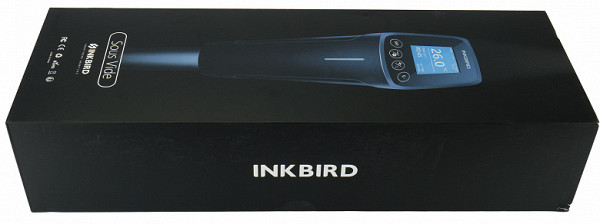
Lifting the lid, we remove the foam insert and find a neatly stacked device, wrapped in protective material and placed in a plastic bag. Nearby lies the instruction manual, discreetly formatted and securely protected.
At first sight
The Inkbird ISV-100W thermostat has a design familiar to immersion sous-vides: a handle and a cylindrical immersion part with a heating element and a screw for mixing water.

The upper part of the device, made of black plastic, fits comfortably in the palm of your hand, despite its size. On the top panel there is a control panel, and on the reverse side the power supply is connected via a cord. The length of the cord seems sufficient for comfortable operation of the device. Ventilation holes in the form of narrow stripes are located near the control panel and at the bottom of the handle.

On the front side at the top there is an operation indicator.

On the back side, approximately in the middle of the structure, there is a clamp for fixing the sous vide in the working container. On the surface of the lock you can see a nameplate with information about the product.

The inner side of the folding part of the clamp has a rubber gasket at the point of contact with the surface of the container. This will protect the coating of the pan from damage and ensure reliable fixation of the device.

The immersion part is made of food grade stainless steel (according to the manufacturer). There are marks on it indicating the maximum and minimum water levels.

At the bottom, through any of the four holes, you can see a spiral heating element. There is also a hint on the direction of movement for removing the water pump cover.

Turning the transparent plastic cover in the indicated direction and removing it, we saw a small screw with a diameter of 3 cm. The length of each blade is about 1 cm.

As a result of a visual inspection of the Inkbird ISV-100W immersion thermostat, we did not find any comments. Its design meets the standards for similar devices, and we have no complaints about the quality of workmanship.
Instructions
The user manual is a small brochure. Information is presented in several languages.

The instruction is a brief guide containing information about technical characteristics, operating rules, safety measures and warranty obligations. The main attention is paid to manual configuration algorithms and the process of connecting to a mobile device.
Control
The control panel of the Inkbird ISV-100W immersion thermostat includes a 36x42 mm LCD display and four touch buttons located under it. The display shows the set and current temperature, as well as the set and remaining time until the process is completed.

Setting parameters on the Inkbird ISV-100W immersion thermostat is easy and intuitive. Pressing the «Set» button enters the interface setup mode. The first press starts the temperature flashing, which can be adjusted using the "+" and "-" buttons. The temperature is controlled with an accuracy of 0.5°C. The second press of «Set» activates the hour setting, and the third — the minutes. The operation of the device begins after pressing the far right button, which also stops the heating and rotation of the propeller blades.
During operation, the indicator lights up green, but when problems occur, such as low water level, the indicator changes to red. Important moments in the process are accompanied by a sound signal: reaching the set temperature — one signal, completion of work — three signals. If the water level drops below the minimum value, the device beeps and stops heating.
The device also provides several preset automatic modes. To access the menu, you must hold the «Set» button for three seconds. Then, using three buttons, you can select raw materials and adjust their type and degree of readiness/doneness.
The menu offers different types of food such as beef, pork, lamb, poultry (chicken and duck), eggs and vegetables. The recommended parameters seem adequate and practical. This is a great guide for those just starting out with low-temperature cooking.
The device also allows you to change the units of measurement and calibrate the temperature value, which is a useful feature.

The author has never seen such wide possibilities for control from sous vide itself. The main thing is that all this can be done using just three buttons and in an intuitive way.
Smartphone control
In addition to extensive control options using the device itself, the Inkbird ISV-100W can be connected to Wi-Fi, which allows you to control it remotely. To do this, you need to download the «Inkbird Smart» application from Google Play or the App Store (there is a QR code in the instructions), then register using your email or phone number, add a device from the list and follow the instructions on the phone screen.
The process of registering, finding the device, and connecting it to Wi-Fi went smoothly. However, the device immediately informed us of the problem.
The cooking process looks like this in the application:
The first picture shows the setting of cooking time and temperature. The second shows the cooking process in full swing, where we changed the temperature along the way. The third picture shows the end of the program.
During operation, you can change the parameters; the adjustment step via the application is 0.1°C. When the dish is ready, you need to press the “Confirm” button; otherwise the appliance will continue to heat up.
In the «Additional parameters» section, you can change the units of measurement and calibrate the temperature.
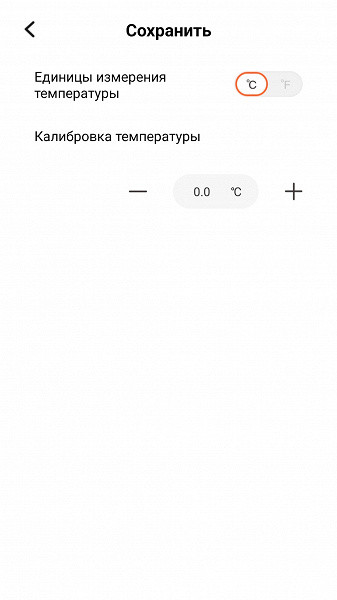
We explored the recipe menu available in the «Custom Settings» section. The name of the section, of course, is not too obvious, but there is nowhere else to click on the main screen of the device. Here you can view existing recipes with cooking parameters settings and add your own. For example, we created a preset “Cod with Oranges” in the “Seafood” category, setting our parameters, adding a photo and writing a hint for preparing raw materials.
In general, the functionality of the application is quite wide — from adding a specific device and managing it to managing a smart home and purchasing other products from the manufacturer.
In addition, the application also allows you to configure a multi-user control system. However, we won't delve into this feature as it detracts from the main purpose of our review.
In general, controlling sous vide via your phone is quite simple and convenient, even for those who prefer more traditional control methods.
Exploitation
Working with the Inkbird ISV-100W immersion thermostat turned out to be very simple. Control is intuitive and convenient, both directly from the device itself and through the application.
Temperature changes in 0.1°C increments in the app or 0.5°C in manual mode, as well as precise time adjustments up to a minute, allow you to adapt cooking to any culinary task.
The clip-on carabiner securely holds the device motionless in a container with water and product.
To avoid unnecessary energy consumption and rapid evaporation of water, we covered the container with water and the operating device with film.
The operating rules are simple and clear: monitor the water level, do not wrap the cord around the body until it has cooled down, and do not place a bowl of hot water and the sous vide itself near surfaces that can become deformed from high temperatures.
During testing, we did not find any comments or features that require special attention or description, with the exception of one subtle point. After the set time has elapsed, the device issues signals about the end of the process, but heating does not stop. To stop the heat treatment, you need to remove the vacuum bag with food from the container with water. This may seem inconvenient, but according to the manufacturer, this change was made after user requests to avoid possible problems with the change in the taste of the dish and the growth of harmful bacteria.
Care
Considering that the device comes into contact only with clean water, it does not require special care. Even the instructions do not mention the need to clean the immersion thermostat after finishing work. However, common sense dictates that the case can be wiped with a damp or dry cloth as needed. If necessary, you can also descale the heating element using known and simple methods.
Our measurements
The power of the Inkbird ISV-100W sous vide, measured with a wattmeter, ranged from 820 to 910 W. Energy consumption turned out to be moderate: in 24 hours and 17 minutes of operation, the device consumed 3.081 kWh. The noise during operation is practically inaudible — the extremely quiet hum does not irritate at all and does not disturb the person located next to the device.
It was important to make sure that the thermostat maintained the set temperature throughout the entire volume of water. To do this, we took several measurements with an immersion thermometer at different points in a five-liter container. The thermometer showed the same temperature everywhere, which was the same as the sous vide setting.
Practice tests
Homemade sausages
The circle of sausages, made from quality pork and beef, was vacuum-packed and placed in a large saucepan with the immersion thermostat pre-set and water added. As the sausages began to rise to the surface, we used a suitable weight glass to weigh down the vacuum bag, preventing it from being pressed to the bottom. This way, water could circulate freely around the grocery bag.

Initially, we chose the pork chop cooking mode. The app recommended cooking it for one hour at 60 °C. However, after thinking about the situation, we decided to increase the temperature to 70 °C. In the end, it is important for us not only to enjoy the taste, but also to take care of our health.
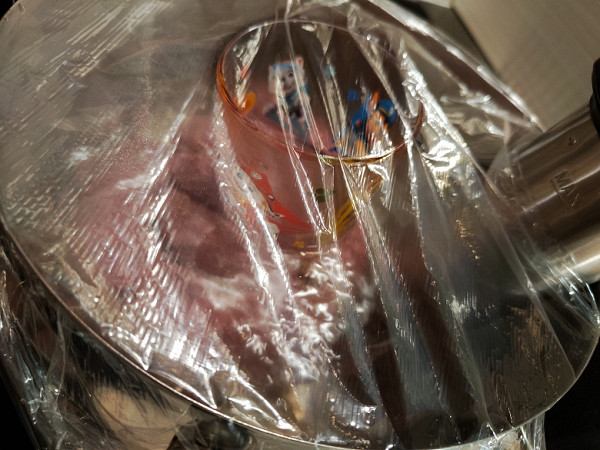
After an hour, the device beeped three times, after which we turned it off via the app. The meat juice released in the bag was pink and transparent, the protein had curled, so the sausages could be considered ready.

After cooling, lightly fried them in a frying pan.

By the way, I found buckwheat porridge and sauerkraut in the refrigerator.

Result: excellent.
Cod with oranges and herbs
The cod fillet was thawed, then rubbed with salt, a mixture of herbs, and layered with a thin slice of orange and butter. Next, it was sealed in a vacuum bag and placed in a container with water and an immersion thermostat.

Cooked for 40 minutes at 65 °C.

After this, we carefully cut the bag, removed excess moisture and began tasting. The fish was completely cooked, juicy and had a pleasant taste, despite the fact that frozen cod usually does not have any special gourmet properties.

Result: excellent.
Turkey breast
A turkey breast weighing 860 g was salted, rubbed with adjika and dried garlic, vacuum sealed and left to marinate for several hours.

Cooked at 65 °C for 6 hours.

I could write for a long time about the advantages of low-temperature technology when cooking dry poultry breast. Believe me, it is not only edible, but also tasty, and most importantly, it is not dry at all.

Result: excellent.
Egg
The C0 egg was boiled at 65 °C for one hour. The yolk was firm and creamy in texture, just as expected. The protein became whiter, but most of it remained semi-liquid.

A yolk with this flavor and texture is quite difficult to achieve without sous vide.
Result: excellent.
Roast beef
Finally, we decided to conduct the most awaited test. A piece of thick edge weighing 1.05 kg, purchased at a regular butcher shop, became the object of our experiment. Although such meat could be simply fried, the result could be tough and unsatisfactory. Low-temperature cooking, on the contrary, promised to tenderize meat of almost any quality. So we decided to cook roast beef. A piece of meat was rubbed with a mixture of peppers, dried garlic and basil, salted and lightly greased with vegetable oil. After this, it was vacuum sealed and left for several hours to salt out.

Cooked for 10 hours at 58 °C. And it was worth it!

Then it was cooled, the juice was drained, dried with a towel and lightly fried on both sides.

The meat turned out to be very tender. Slightly pinkish when cut, soft, the veins are not felt at all — only the bright taste of beef. Can be consumed both warm and cold.
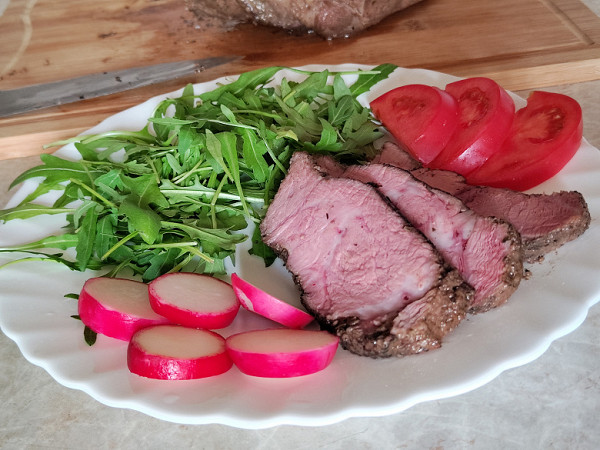
Yes, we are once again convinced that sous vide is indispensable when cooking tough meat.
Result: excellent.
conclusions
The Inkbird ISV-100W sous vide stands out for its high-quality performance and reliable operation, predictable in achieving the desired result. Its peculiarity lies in its wide control capabilities, available both directly from the device and remotely. The user has the opportunity not only to accurately regulate the temperature in 0.1 °C steps, but also to use preset recipes stored in the device’s memory. The application allows you to add your own culinary experiments, which makes it easier to select parameters for future preparations.

The device is almost silent during operation. The thermostat and its compact screw seem to maintain an even temperature throughout the entire fluid volume. It may be noted that the lack of automatic shutdown at the end of the cooking cycle may be a disadvantage for some users. However, it is worth considering that automatic shutdown also has its drawbacks. In any case, it is recommended to remain near the device during the completion of the process.
Pros:
- fine and precise temperature regulation
- Maintaining the same temperature throughout the entire volume of the container
- possibility of control from a mobile device
- the presence of pre-installed programs with adequate parameters
- almost silent operation
Minuses:
- no significant ones were found





